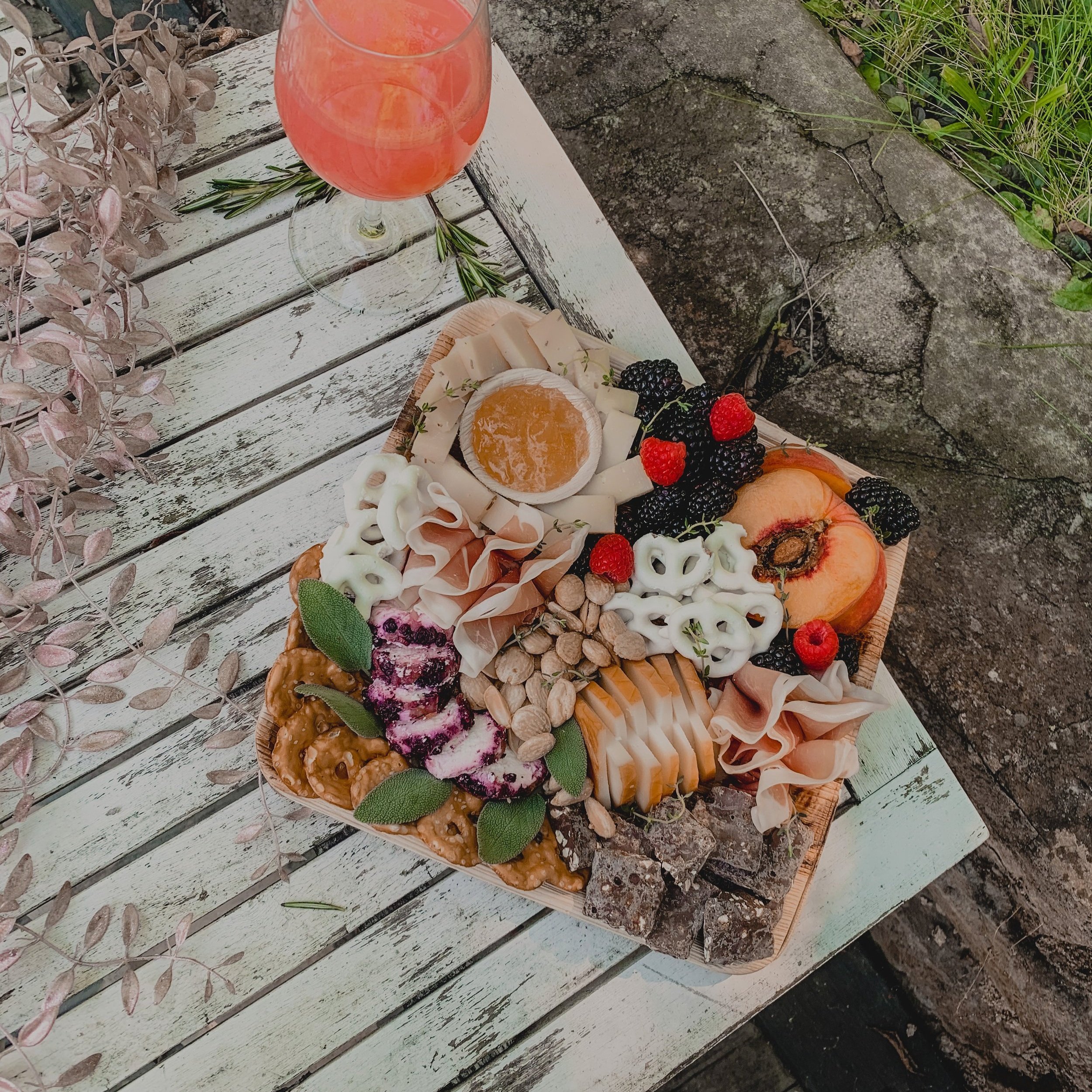Charcuterie 101: How do I pick which fruits go on my board?
Welcome to the Board Tour— a blog where we explore the world of charcuterie and share some of our favorite artisanal cheeses, tips, and tricks. Charcuterie 101 is our 5-part series focused on the building blocks behind the craft. From choosing your cheeses to incorporating the elements of design, we’ll cover everything you need to know about creating your own board.
by: Lauren Barker | owner/cheese artist
When it comes to planning the overall aesthetic of a charcuterie board, picking the right fruits can really elevate a design. Not only do they add a pop of color, but they also provide a refreshing and sweet contrast to the savory meats and cheeses. Continue reading to learn how I decide what fruits make it onto my boards.
Curate a Color Scheme
The fruit you choose for your charcuterie board is the perfect opportunity to add natural pops of color and create eye-catching contrast. Think of them as the highlights and lowlights of your design. Before I even step foot in the grocery store, I like to decide on 1-2 colors I’d really like to highlight on my board then build out from there. So if I decide I want a warmer toned board full of reds, then I might decide to pair red grapes with a Bosc pear so that the neutral tone of the Bosc pear can provide a visual reprieve from the red ingredients, adding dimension without clashing against the warmer tones. A couple other fruit color pairing tips include:
Add fruits that have a blend of colors, such as a fresh fig or a multi-toned apple, to act as a bridge connecting opposing colors on a board into a cohesive design.
If you’re planning a board for a particular holiday, try to find fruits that reflect that holiday’s colors to really tie in the theme.
A neutral-toned Bosc pear complements the curated green fruit lineup for this Shrek themed board.
Feature a Variety
When it comes to the kinds of fruits on a board, I encourage adding a variety of textures and flavors. Grapes are a classic choice because they are easy to eat and come in many different colors. Berries, such as raspberries and blackberries, offer a tart and juicy burst of flavor. Figs are a luxurious addition to any board and their soft texture pairs perfectly with hard cheeses. Pomegranate seeds add a bright pop of color and a sweet crunch. For all of my boards, I like to include:
a larger sliceable fruit like apples, pears, or peaches for an eye-catching accent
a berry or seed such as blueberries, blackberries, raspberries, or pomegranate seeds for scattering and filling in empty spaces
To add some textural variety, I also recommend kiwi, oranges, or grapefruit cut into flowers, a bushel of grapes on the vine, or some juicy strawberries either left whole or styled into halves.
Strawberry hearts a sweet addition for a Valentine’s Day board.
Shop in Season
Being mindful to include in-season fruits can be a great way to craft a cohesive aesthetic for the time of year you’re serving your board - and they also pack the freshest flavor! For example, apples, pears, and pomegranates are great for capturing a fall/winter vibe, while green grapes, berries, and peaches create a more spring/summery feel. It’s also important to note that some fruits can be associated with a certain holiday even if they aren’t technically in season, such as strawberries on Valentine’s Day. Check out Cheese Garden’s seasonal fruit cheat sheet to help you navigate the produce section next time you arrange a board.
Take advantage of peach season on a late summer board.
The Last Slice
So, the next time you’re deciding which fruits to add to your board, remember to:
Curate a color scheme that creates pops of color while tying together your other ingredients
Feature a variety of flavors and textures
Shop in season for the freshest fruits
And most importantly, there are no strict rules when it comes to assembling a charcuterie board - have fun and get creative with your fruit selections!




